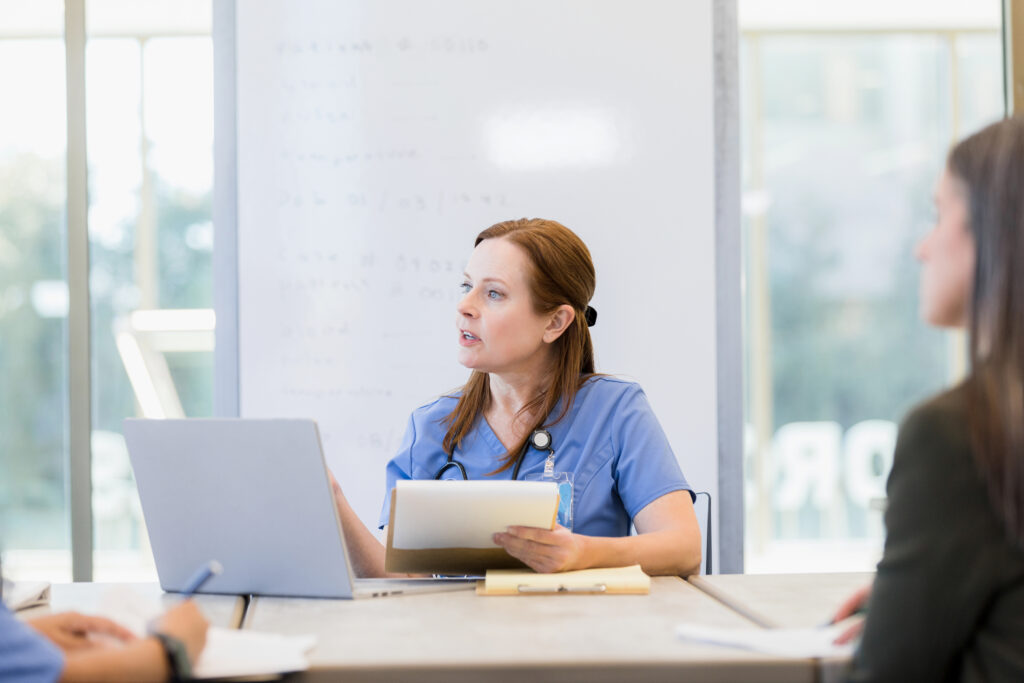The Ultimate Med Matchmaker: 6 Steps to the Residency Couples Match
- by
- Feb 01, 2024
- Reviewed by: Amy Rontal, MD

Erin Elbel and Dr. Mike Ren contributed to this post.
Ah, medical love: the phenomenon where, from across the lecture hall, your eye is drawn more to someone cute than it is to the acid-base lecture.
This is not an uncommon occurrence—according to a recent AMA survey, 40% of doctors are married to other doctors, probably due to the vast number of hours we spend around one another during training coinciding with the prime life stage for finding a partner.
Valentine’s Day is quickly approaching, which means your rank list for residency is soon to be due. Many students are leaping into the residency together and so the cupids here at Blueprint want to share a little about the inner workings of the couples match, how to prepare, and ultimately, secure a residency spot with your partner for a happily ever after.
How Does the Residency Couples Match Work?
Stage 1: Early Courtship in Med School
Dating a fellow med student can be a huge source of support. For me, having a built-in study buddy during pre-clinical years and someone to relax with after a long day on the wards was one of the biggest joys of medical school.
Having a significant other to confide in during the harder rotations can be a huge help. Someone who understands exactly where your frustrations are coming from is great to commiserate with. Most couples who match together start dating before third year, but not all. We have friends who started dating in October of their fourth year and happily couples matched!
Stage 2: Having the Couples Match Conversation
Couples matching is a huge decision for any relationship and the conversation about whether to do it starts early. If one of you is a year ahead, it may entail taking a research year, completing an MPH, or finding some other way to get synced up. Also consider the lengths of your residency compared to that of your partner’s.
Note: you do not have to be married, or even in a relationship. You could theoretically couples match with a best friend, although it’s not typical.
Stage 3: ERAS Locked & Loaded
Meeting with the Dean
At most schools, the first step of couples match involves meeting with the dean of student affairs, both separately and together with your partner. These meetings will convey the seriousness of choosing to tie your fate together professionally during residency training, which can be as short as three years but as long as seven or more!
Starting Your ERAS Application
You have to decide whether to list the fact that you are couples matching on ERAS. In general, it is recommended that you do (so that residency directors don’t feel you are trying to hide anything).
Some programs are more hesitant about couples match applicants than others. However, overall, the couples match should not significantly impact your chances at matching as long as your partner has similar opportunities to match as you do.
As with matching alone, this changes based on how competitive you are as an applicant as well as how many programs you rank and how difficult it is to match into your specialty/program. For example, two students couples matching into internal medicine will have a higher chance of matching than a couple who both try to match radiology. In fact, two students couples matching into IM will have an easier time than a couple trying to couples match IM and radiology (given similar applications and number of programs ranked).
Deciding Your Prospective Programs
The next step involves making lists of programs to apply to. We made our lists separately at first, and then together. For our specialties (pediatrics and OB/GYN), this means adding about 20 more programs each than we would if we were applying solo. We are both of similar competitiveness, but this number may need to be tweaked if one applicant is applying into a very competitive specialty or if one applicant is substantially stronger than the other.
We then sorted our potential programs by city. We had a low threshold to add a program in a city if our partner was very attached to a program there, but also had some honest conversations about which cities we absolutely did not want to live in. You pay per program on a sliding scale that increases the more programs you add, so this step can get pricey. This is about the time we signed up for credit cards with good miles rewards programs.
The stress sets in once couples have to coordinate their rank lists. The National Resident Matching Program (NRMP) combines both partner’s lists and will match couples to the top preferred program on their rank order lists where each partner has been offered a position, meaning if they do not match as a couple, they will not match unless one of the applicants chooses to go “unmatched” on their rank lists.
Finally, we swapped personal statements and ERAS applications and went through each others’ applications with a fine-toothed comb. Your partner’s success is your success!
Asking a Mentor for Help
It is important to have a mentor who can oversee your couples match in general, rather than looking solely at your individual lists. Fortunately, we were able to find multiple mentors who had couples matched themselves, so we had lots of great support.
Don’t be discouraged by the difficulty of this process, because the statistics for couples matching are great!
In the 2023 Match, there were 1,239 couples participating. Of these couples, 1,095 had both partners match and 114 had one partner match to residency training programs for a couples match rate of 93.0 percent, which has been fairly stable for the past three years!
Stage 4: The Residency Interview Trail
Applying to lots of programs means lots of interviews. It’s not unheard of to interview at 20+ places. During interview season, we tried our best to coordinate as many interviews as we could to have mini vacations, but more often than not we were riding solo.
Now in the era of virtual interviews, applying to more programs is only seen as advantageous. There are no additional travel costs, and you increase your chances of couples matching! Make sure to signal similar programs and have the same geographic preferences as your partner!
During this stage, it’s important to keep your mutual spreadsheet updated with who is getting which interviews, the dates, and their impressions. If your partner gets an interview and you don’t, you can often reach out to your dean or mentors and have them help get you an interview there.
Many students have gone so far as to reach out to program directors, with mixed success. They may call directly on your behalf, or recommend that you each send emails to your respective departments and ask them to consider interviewing the partner who doesn’t have an offer yet.
Stage 5: Ranking for Days
While your non-couples matching friends get to agonize over which of their 10 or so programs to rank first, you and your partner will be tackling the Herculean task of sorting a joint match list that can easily extend hundreds of permutations deep. Your combined list will rank each possible combination of programs for both of you. For example, if you each interviewed at only three hospitals, A, B, and C, your list might look like:
The number of possible ranks = (number of Partner A interviews +1) * (number of Partner B interviews +1) -1.
In other words, if Partner A has 15 interviews and Partner B has 20 interviews, they can rank (16*21)-1 = 336 possible combinations. You can see why you need Excel here.
Don’t forget that there is always the option to withdraw. If individuals who have coupled in a Match subsequently choose to participate in that Match as individuals or if one partner wants to withdraw from the Match, both partners first must uncouple.
Once uncoupled, each individual must adjust their rank order before the Rank Order List Certification Deadline.
Stage 6: Matchmaker, Matchmaker, Make Me a Match (Day)
Finally, March rolls around and the big day arrives. Different couples have different approaches to handling this momentous day. Some open one another’s envelopes, others livestream the opening event on social media, yet others find a quiet room in which to learn their fate. Regardless, most couples end up in the same city or at least the same region, and get to head off to residency with their favorite person in tow.
Best of luck with your couples match journey!
Looking for more (free!) articles to help you through the Match? Check out these other posts from Blueprint tutors on the Med School blog:









